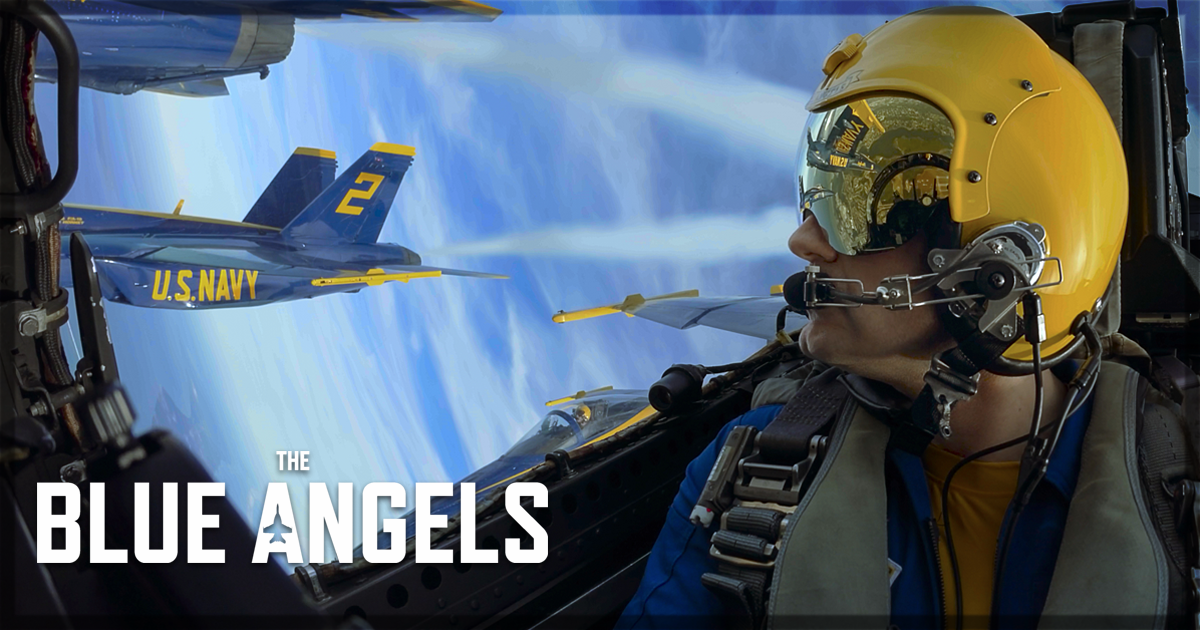The Blue Angels is the latest documentary from Paul Crowder. The film follows the elite U.S. Navy and Marine Corps pilots as they train for a year of the high-flying aerial arts.
In 2022, the long-awaited sequel to Top Gun was finally released after multiple scheduling moves due to the pandemic. Top Gun: Maverick was a huge hit. It premiered with acclamation at the 2022 Festival de Cannes, grossed almost 1.5 billion dollars at worldwide box offices, and was a streaming and VOD hit. It was nominated for six Academy Awards, winning Best Sound.
After a while, movies about the Navy and their realities returned to the spotlight. In the same year, Devotion premiered at the Toronto Film Festival with a positive reception, even though it was less successful commercially than Maverick, losing an estimated 89 million dollars in its release.
Besides the fact that both narrated the Navy pilots’ realities, they also shared the fact that they had Glen Powell staring in both movies. After those experiences, aviation is a topic that excites him, as he returns to the jet garages producing The Blue Angels. Directed by Paul Crowder, the film is a Prime Video release. Narrating the 2022 exhibition tour of the Navy’s Blue Angels follows a whole year of their work.
The story of The Blue Angels documentary
Starting from their three-month intensive training in the El Centro base in California, the film presents six pilots out of the squad’s three thousand seven hundred members. Presented as an initiative responsible for demonstrating the U.S. Navy’s precision and teamwork to the world, it also served as a soft-power tool to inform the power that the U.S. has.
Crowder establishes the workgroup’s organizational and power dynamics in a seven-minute prologue. This quick presentation ends up being the viewer’s most relevant information piece in the film. It also reflects how the film details the narrative to the viewer: disjointed and quick.
The director bets on the aerial images as the most essential part of his film; however, they turn out to be repetitive, and the fast-paced, appressed style causes it to lose steam. The Blue Angels tour has thirty-two performances, but directorial choices are options to show only the first one in detail and spend a few seconds on the others.
The Blue Angels features three credited editors, and each has an approach when the final credits roll. Some of the performances have few cuts and searches for a cohesive camerawork to show the impressiveness of that activity. However, some of the sequences need clarification, as they seem too excited with the multiple possibilities of the footage. The result is moments that randomly change points of view to show how that activity is dangerous but exciting, and the viewer is too worried about trying to cope with that much information on the screen.
Another excessive point is the score by James Everingman & Stewart Mitchell, executive music produced by Hans Zimmer. It makes sense to have him as a musical producer, as the music constantly tries to evoke the epicness of Top Gun: Maverick. Almost every scene sounds potent and majestic, but some interviews feel misconducted once the background is a highly energetic army hymn, while on the screen is someone talking about their daily routine. It’s a work that would work fine within another art piece; here, it feels misplaced.
Authenticity and the jet garage interviews in The Blue Angels
The most exciting part of The Blue Angels are the interviews in the jet garage. They feel like a more authentic translation of what the crew feels. The garage is filled with heartfelt sayings of the crew chiefs responsible for checking before the flights. Unfortunately, the director has not explored this much, so it is just a tiny excerpt within the film.
Unlike the crew interviews, the six pilot interviews were not exciting and sounded more like those of a public relations coach. They are harmed by tentative directing to ease the limitations of the talking head style, but he chooses to do that by placing his subjects standing still in an office with a lens that only focuses on them.
It is distracting and cringy, almost like the Office-style framing. When the viewer is taken into the personal lives of the pilots, the film maintains the Discovery Reality TV style of documentary, which could be more visually cohesive with the IMAX grandiose film that it is being marketed as.
Like the demonstration flight, The Blue Angels complements the propaganda of the U.S. Navy’s power. Its acritical approach and messy montage harm the experience. Multiple cuts lower even the IMAX shot aerial sequences, and the highly epic music is misplaced here. Ultimately, The Blue Angels does not achieve the high places it intends to.
The Blue Angels is now streaming on Prime Video.
Learn more about the documentary at the official Prime site for the title.


